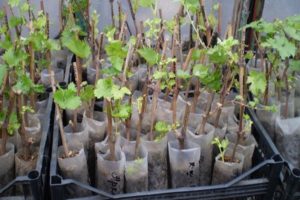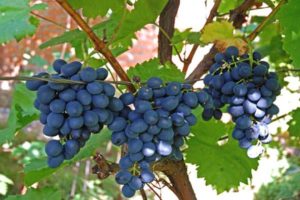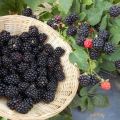Description and characteristics of Krasotka grapes, ripening and care
The dream of any gardener is to grow a grape variety with large fruits of an attractive appearance, combined with an exquisite taste, on his site. The choice is varied, but it is worth focusing on the Krasotka grapes. These principles were guided by its creation. Learn from the material about the features of this variety, the advantages and disadvantages, the rules of planting and care.
Description
The name of this grape eloquently replaces the most detailed description of the variety. The beauty is created by pollination and crossing the Victoria variety with the pollen of other grapes. It was bred relatively recently by the breeder E. Pavlovsky.
The bush is characterized by a developed root system, which contributes to frost resistance. Flowers of both sexes, which eliminates cross-pollination.
The berries are formed into large clusters of narrow conical shape, elongated outlines. The shape of the fleshy and juicy berry is elongated, with a pointed tip. The grapes are large, with a length of a five-ruble coin and more, pointed towards the bottom. Coloring - unevenly distributed, starting from purple - from the base of the bunch, turning into pink - to the end.
The grape has a sweet taste with a nutmeg hue and a refreshing aftertaste.
Variety characteristics
The characteristics of the Krasotka grape variety are still subject to final study, but it is reliably known that it differs in the following features:
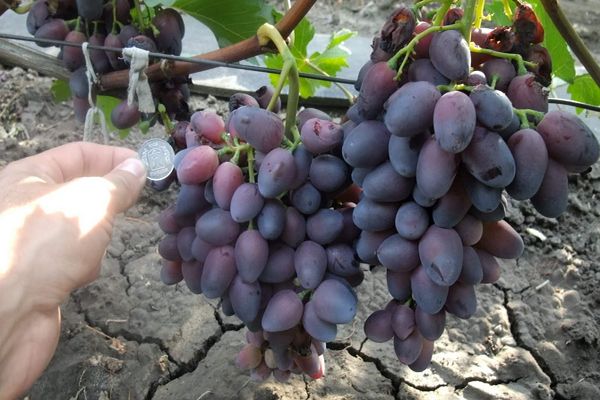
- early ripening - within one hundred and fifteen days from the beginning of sap flow to harvest;
- almost complete ripening - up to ninety percent;
- the maximum workload of the bush - up to forty shoots;
- the mass of the bush - up to eight hundred grams, with the mass of one berry - up to eighteen grams;
- fructose content - up to twenty percent;
- acidity - six grams per liter.
The variety is frost-resistant, tolerates temperature changes well.
Advantages and disadvantages of the variety
The beauty is characterized by the following attractive qualities:
- the ability to withstand intense solar radiation;
- withstand a drop in temperature to twenty-four degrees of frost;
- immunity to putrefactive and fungal diseases;
- beautiful appearance and exquisite taste of berries;
- stable yield and fast ripening.
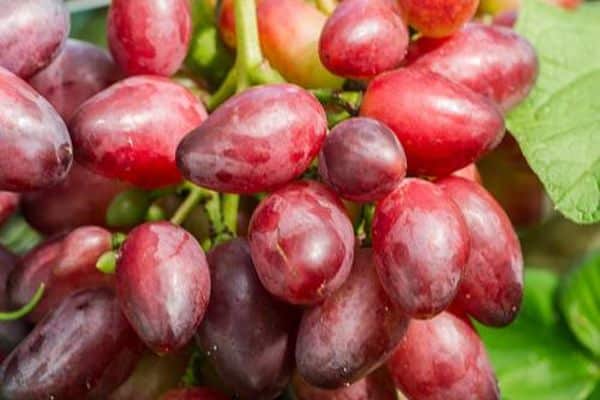
However, the grapes do not tolerate excess moisture - the peel of the berries bursts. Correct pruning requires detailed consideration of the characteristics of the bush.
Landing rules
When planting grapes, it is important to adhere to the necessary requirements for the seedling to take root well and develop normally.
Seat selection
As for many other varieties, an open sunny place should be selected for Beauty, the composition of the soil is acidic, a prerequisite is ensuring drainage. It is recommended to choose south-facing slopes or sunny areas along the buildings.
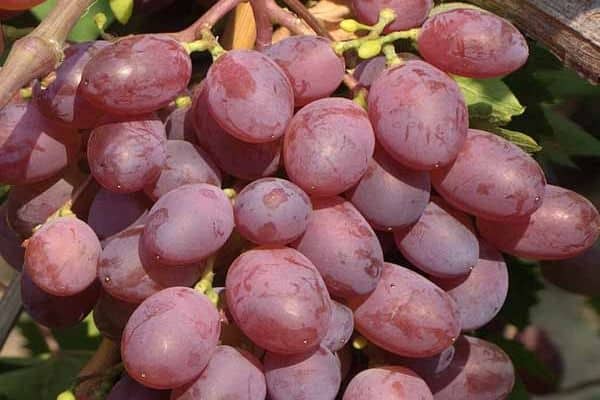
Landing features
The soil is preliminarily prepared; in case of excessive acidity, liming is necessary. The soil must be treated with organic fertilizer.
A stalk or bush is planted half a meter deep to ensure safe wintering of the roots. The vaccination site should be located above ground level. A peg is pre-driven in, serving as a support for a young bush.
If several bushes are planted, the distance between them should be one and a half meters, if the site is open, and about a meter - in the area near the walls of buildings. Planting time is early spring, until the buds have blossomed.
Care
For the intensive development of the bush, it is necessary to provide proper care, including a number of measures.
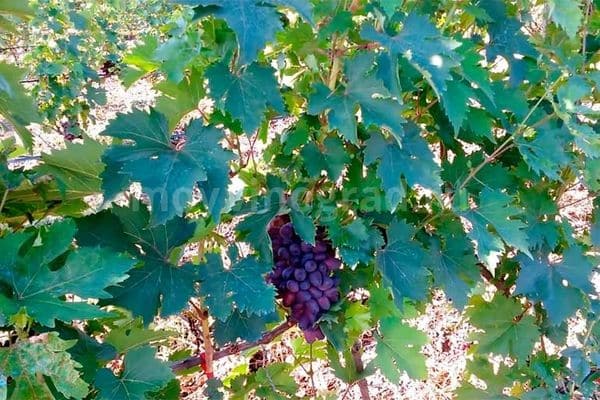
Watering
Initially, the plant is watered when planting in an amount of thirty liters, followed by mulching the soil to prevent drying out. The frequency of watering is determined by the degree of dryness of the weather. In hot weather - every other day, in rains - weekly.
Important! To exclude damage to the berries, you should ensure stable humidity, without sudden changes.
Watering stops shortly before harvesting.
Top dressing
The increase in yield is achieved by the normal content of nutrients in the soil. Top dressing includes:
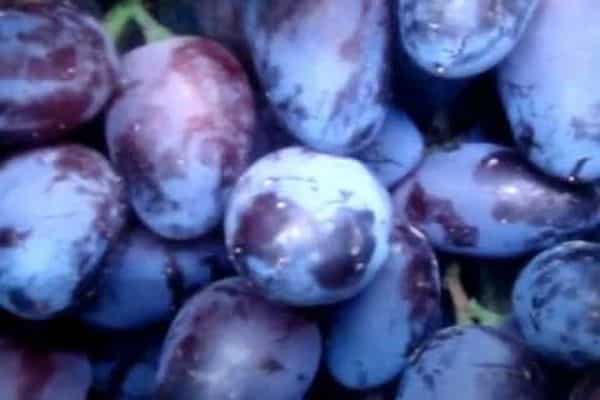
- application of nitrogen fertilizers in the spring season;
- in summer - addition of phosphorus and potassium;
- in the fall - manure or peat.
It should be carried out one year after disembarkation.
Pruning and sheltering
The vine should be pruned annually, before the onset of winter. Every year the bush expands, with an increase in the number of branches. Despite the good frost resistance, measures to insulate the bush, using sawdust and cardboard, will not be superfluous. The insulation is removed in the spring, after the snow melts, when the frosts have passed.
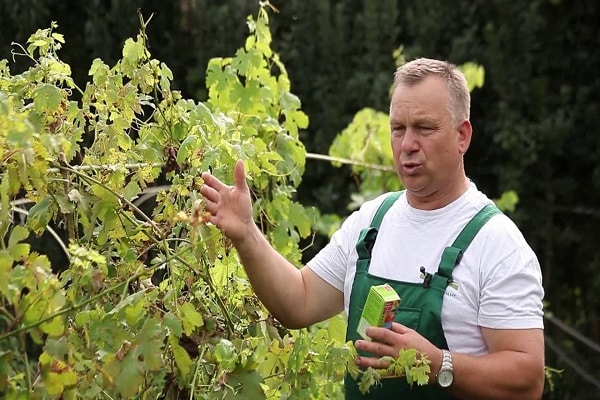
Protection against diseases and pests
In early spring, the bush is processed with iron vitriol to exclude the development of putrefactive and fungal diseases. During the season, additional treatment with chemicals is not required due to the high resistance of the variety.
Ripening berries are protected from the effects of wasps with a mustard solution, bait with poisonous substances or jars of sweet syrup.
Having opted for Krasotka grapes, the gardener will receive a stable and unpretentious variety with an excellent taste and visual appeal of berries.
